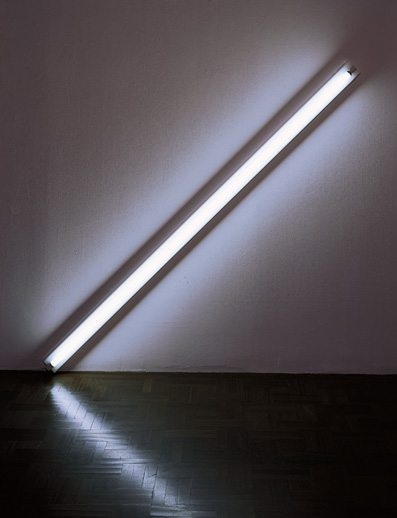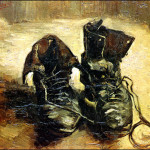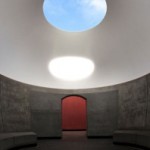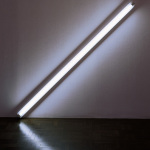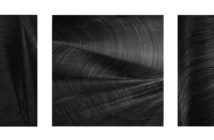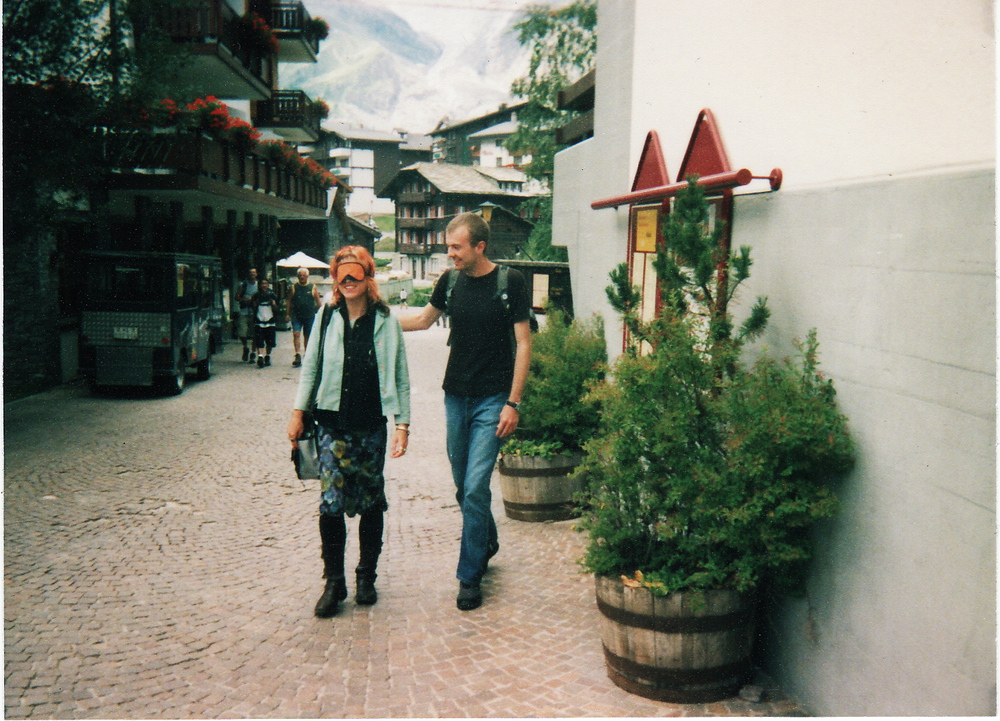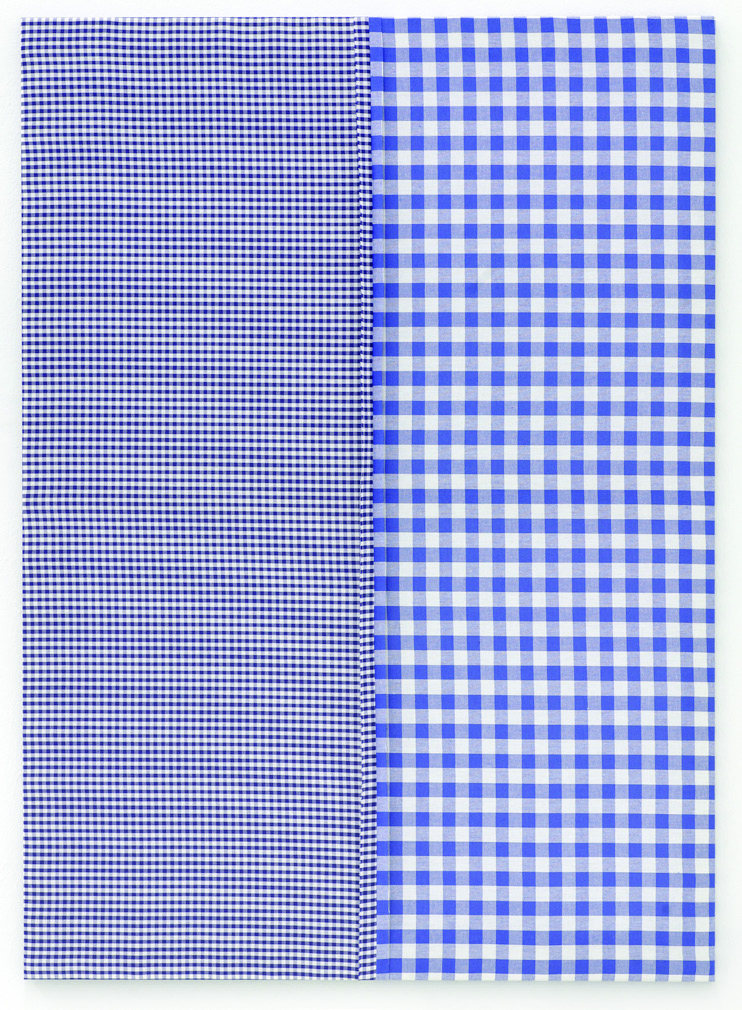Yet, the being of art being this way certainly deserves elaboration and the being of art being any way certainly deserves understanding by its champions. This should be a charge for the myriad hungry artists hoping to create revolutionary work that scratches their name into wet cement, which future historians will one day look toward as they contextualize and understand the present moment. An eye that sees around the perverse monetary and political tentacles that leech off all points of humankind and instead surveys the phenomena of the practice will serve to extract art’s adherents from the depressing swamp of auction fever and commercial hype, abandoning mania for meaning and restoring the practice to one of sensibility and substance. A fine lens through which this eye can gaze is found in the philosophy of Martin Heidegger, whose work on the nature of being provides a great tool for seeing things in a new light. His tome Being and Time revolutionized philosophy and his essay "The Origin of the Work of Art" similarly changed the way people think about the nature of objects, as well as the ambiguous nature of art. Using principles from his phenomenology, one can attempt to uncover the phenomena of contemporary art as media for truth, and in this process a unique duality in the contemporary art forms that appear shortly after Heidegger completed "The Origin of the Work of Art" opens up the key oppositional conflict in his philosophy, integral to his understanding not only of art, but also of truth.
To begin, one must identify how he sees phenomena. In the introduction to Being and Time, Heidegger etymologically unpacks the word "phenomenon" from its Greek origins. He establishes its present iteration as from phainomenon: "what shows itself, the self-showing, the manifest."5 He points out several roots within the Greek word that contextualize it germane to phenomenology; for instance, because of its relation to phós and phainó, light and the action of something brought into it, respectively, he stresses an illuminating manifestation as a key aspect of "phenomenon."6 Moreover, there also exists genealogy in phainesthai, which translates as "to show itself," so whatever brings itself into light, regardless of its essence or meaning, as a phenomenon it appears or seems to be something. These Greek beginnings also relate to the words der Schein, die Erscheinung, and scheinen in his native German, whose definitions are concerned with appearances and shining.7 Likewise, the English word "shine" comes from not only German, but also Old English beginnings, and like its homophonic cousins, implies the emanation, reflection, or appearance of light; although, he asserts that "phenomena are never appearances," rather appearances originate from phenomena.8 Nevertheless, the salient point here is that light is integral in Heidegger’s formative phenomenological ontology, particularly as that into which something goes.
But of which sort of light does Heidegger speak? He continues by addressing the lumen naturale, the natural light, what he characterizes as an unconcealedness where beings disclose themselves as a being-in-the-world, something he further elaborates as a clearing, or being there in the world.9 He stresses the importance of clearing in "The Origin of the Work of Art," saying, "[t]hat which is can only be, as a being, if it stands within and stands out within what is lighted in this clearing."10 Notably, he asserts this is where "something like sight first becomes possible."11 For this reason, Heidegger mainly speaks of light as ontological, or existential illumination when he unpacks "phenomenology," yet notes this light’s necessity in seeing the kind of celestial and artificial lights that illuminate the Earth. Insofar as light is important to phenomenology, light as celestial and artificial illuminator is crucial to the practice one calls art, let alone life itself; without it, absolutely nothing can be seen.
Before he can employ art to enrich his philosophical investigations, he must first wrestle with its definition to determine its being, doing so with his own inspired flair. Art is generally thought of as many things—painting and sculpture often come to mind—but attempts to define "art" are absurd exercises in futility, something on which Heidegger, in the introduction to his essay, shines light as he shakes his finger over the circularity oscillating between the terms "art," "artist," and "art work."12 This absurdity causes much consternation in and out of the art world, a point from which philosopher Richard Wollheim builds in his seminal text Art and its objects, opining that the task of defining art is "one of the most elusive of the traditional problems of human culture."13 This impasse does not bother Heidegger, he rather sees the conundrum for its opportunity to expand his ontology.14 Yet, though he attempts to obviate this problem, his swift choice of what he will later classify as "great art," the painting Shoes (1886) by Vincent van Gogh, nonetheless invites criticism of his arguments for both quantifying a particular work’s greatness without a traditional comparative qualification of its merits, as well as excluding not-great art from his scope without proper explication as to how its otherwise inclusion might affect his analysis. Clearly, Heidegger relies on van Gogh’s fame as a metric of greatness, perhaps presuming this is a result of his paintings’ many beholders experiencing the sort of "wordless joy" the philosopher poetically arrives at in his own phenomenological description of the work.15 Ultimately, though, he leaves this issue unresolved.
Nonetheless, despite the fact that at its core "The Origin of the Work of Art" is less concerned with aesthetics than it is with metaphysics, its hermeneutical fascination with art work and objecthood—the two raw materials common in many artists’ practices—along with its transfiguration of "art" from a practice and its output of sensually experienced things to a domain of truth’s origin, both speak to why the essay has been so influential in art theory and criticism, though often misunderstood.16 The philosopher’s circuitous loquaciousness, a wordy thoroughness, likely loses and confuses a bulk of his readers. As such, for the benefit of the layperson and the discipline of art criticism, one notorious for its nonsensical reliance on loquacious, obfuscatory artspeak, a hopefully approachable distillation of his phenomenological principles is warranted before discussing the being of art work.17
The principal thing one must understand is how Heidegger defines the world where one will ultimately experience a work of art, something he initially explicates in Being and Time. First, he sees world as a domain in which one discovers beings, objective things, originating in nature.18 He speaks to their ontic, or real, of-nature qualities, addressing how one associates with them through work, or the use of and caring for such things.19 Because of this association, we gain knowledge of the world through physical interaction. We take these varied things in hand and work with them, and as a result of this use we develop an understanding of the world in which they are. Heidegger categorizes these things as being handy, using the German zuhanden, denoting it as ready-to-hand.20 In "The Origin of the Work of Art," he exemplifies a pair of shoes as being ready-to-hand, noting their usefulness for one who walks through the world, identifying them as a piece of equipment.21 This equipment, however, also requires other things for its use—laces to keep them secure and a path on which to walk—objects whose preexistence and contextual proximity to the ready-to-hand thing create the world of its use. This context, an aggregate of references, helps "guide our operations," something Heidegger coins contexts of involvement.22 Moreover, this equipment exists as useful because it has been made as such, once concealed in and now a product of the natural material of the earth; for instance, wooden clogs made from a tree or a walkway assembled of baked brick, or in even more contemporary objects, computers running on silicon. As this equipment is repeatedly used, it eventually wears out, and no longer assists in physical interaction with the world, becoming unhandy.23 The unhandy thing, discarded or left for waste, will return to earth and once again become covered up in its domain, the earth’s being being one of concealment.24 For the purposes of art, one can think of earth as the ontic world in which it is hidden and from which artists uncover it, a notion Heidegger spells out using a quote from the artist Albrecht Dürer: "For in truth, art lies hidden within nature; he who can wrest it from her, has it."25
From here, Heidegger now expands his ideas on world. He also sees world as a domain in which one discovers being, the "being" in the phrase "being objective things."26 He speaks to things’ ontological quality, noting that these things are, they are there.27 Handiness, in fact, is a being—useful things are handy.28 Conversely, unhandiness is a being, and an important one, too. He stresses how as the usefulness of things diminishes and we are unable to put them to use, they are no longer ready-to-hand, but rather they are merely there: they are present-at-hand, or vorhanden, instead.29 This equally applies when things lack something else needed for their useful implementation or they stand in our path as an obstruction. It is no longer equipment. It is merely a thing. In these situations, the "totality" of the contexts of involvement sincerely "makes itself known" as world.30 A present-at-hand work of art, such as van Gogh’s Shoes, similarly "opens up a world" as a result of its being, since viewers create a context of involvement while they view it.31

At the same time, a work of art is also earth—it is made of natural things. Crushed stones yield pigment, woven cotton makes a canvas, ferruled bristles form the brush a painter uses to unite those two. This differs little from the work of making a pair of shoes, its leather hand-cut, hand-stitched, and hand-polished before putting it into service as equipment. Heidegger believes works of art serve as equipment to set truth to work, insofar as shoes serve as equipment for interacting with other objective things.32 Take, for example, the painted Shoes placed into the light of a gallery. Viewers behold the composition: well-worn shoes speak of hard labor, their scuffed surface suggests kicking through a hardscrabble life, as crinkled, tattered laces tenuously hold them on their owner’s feet. This image of shoes unconcealed from the natural materials of earth similarly unconceals, or moves into a clearing, the "being of the shoes."33 This latter unconcealment sets up a new context of involvement within the world of the viewer, and because the viewer is also present-at-hand, each facilitates the unconcealment of the other.34 This being of unconcealedness is truth "that is at work."35 This is, in part, because a conflict exists: the concealing nature of earth and the unconcealing nature of world together work by "moving apart" and creating a place for truth.36 In a sense, this is phenomenological work, as opposed to physical labor, from which one gains knowledge of being through metaphysical juxtaposition. Moreover, the work of art grounds history in earth, having drawn from a "reservoir" of the unthought, or the uncovered possibilities for truth, by the creation of a thing that itself creates a world for its beholder, one which is truth itself; that is to say, because art work is made of natural materials and its being allows for an object’s creation, which then allows for the creation of truth, which is history, through its context of involvement, a history becomes adjoined, so to speak, to that object’s being, and furthermore within the totality of natural material itself, a repository for infinite objects to be made and pondered and historicized thus exists.37 Works of art, therefore, surpass the categories of ready-to-hand and present-at-hand, and instead inhabit their own discrete category that recognizes their unique created being: "[a]rt then is the becoming and happening of truth" (emphasis removed).38
Heidegger has set forth phenomenological principles that delineate truth’s origins in art; they are not, as he notes, principles that "force art and its coming-to-be."39 The length of his preceding arguments, though, outshines this short warning at the end of his essay, and perhaps the being of mental exhaustion setting in as a result of the former fact glosses over this quick caution, failing to warn excited, suddenly inspired aesthetes who soon attempt to create theories on and schemas for the nature of great art derived from his claims. This aforementioned pitfall will be sidestepped here. Having arrived at this conclusion, one can see why Heidegger avoided qualifying greatness from visual attributes; such a criteria can never be drawn from the ever-growing contexts of involvement for use in the present as greatness requires deeper placement within history.
Still, we’re unsure why only great art, and not art in general, is his concern. Our concern shall now be to broaden his scope, not necessarily to challenge the notion of "great," but to delimit and readdress his arguments with contemporary work in order to unconceal being a work of art as it stands today by confronting the objects and phenomena of light itself.
Though popular culture often associates Thomas Edison as the inventor of the light bulb, its origins predate his first, late-nineteenth century patents for the object by several decades. Bulbs in their early incarnations were incandescent, and their many initial iterations were primarily concerned with extending their working life, shortened because of their thin filaments that quickly burned out by beaming hot, hot light. The poor efficiency of early bulbs eventually led to the creation, by the Germans Heinrich Geissler and Julius Plücker, of tube lighting, the primitive version of the energy efficient fluorescent bulbs ubiquitous today.40 Light bulbs, of course, are equipment for illuminating homes on moonless nights and enabling the twenty-four hour capitalist society of which the art market is a dear part. Bulbs are created with composites of silicate glass and inert gasses vacuum-trapped, then inserted into ceramic ballasts powered by copper wiring to be turned on and used. They have been made as a result of unconcealing the natural materials of earth. Consequently, fluorescent bulbs are handy things.
When fluorescent light bulbs suddenly fail, especially in a room illuminated with only a single tube, a new world slowly opens up. No longer useful, the bulb itself is now merely a thing. It’s just there. This new world is dark. It is quieter. The constant faint hum of electricity buzzing through a tube dissipates. This world is confusing since we cannot see without light. This world is perilous as we slam our foot into the unseen tire iron haphazardly jutting into the path we now take, hoping to escape a very dark garage. The hazardous, confusing truth of the world, one that had been covered up underneath light, now makes itself known.
In 1951, when the production of fluorescent bulbs outpaced its alternatives, a result of their wartime usefulness, they soon began to buzz in households everywhere. But in 1963, the being of fluorescent light changed suddenly when artist Dan Flavin started placing a single fluorescent tube at a 45 degree angle on a wall, calling it a work of art, exemplified by Diagonal of May 25, 1963 (1963). The premise was not new, per se; artists had already introduced the readymade—any commercially available object, often unmodified, and appropriated into a non-commercial function—as art five decades earlier.41 Yet, Flavin’s oeuvre is generally considered "great," as many requisitely note this moment when discussing the formation of light art, and his work cements his place in history.42
Unlike the shoes in van Gogh’s painting compared with a pair of shoes now standing in any family’s entryway, there is no material difference between a fluorescent light hanging in a garage and a fluorescent light hanging askew, on a wall, on the instruction of an artist; Flavin purchased his mass-produced lights from the same stores everyone else did, so there was nothing exceptional in the earth of his art work.43 Heidegger foresaw this possibility in his "contrast [of]the handmade with the factory product," using the distinction to point out how a characteristic hand-wrought craftsmanship, while typically prized by artists, can nonetheless fail in distinguishing the madeness of equipment from the createdness of a work of art.44 Does the light emanating from Flavin’s tubes differ from the tube in the garage? No, in the sense that, if one compares the same model of bulbs, the chemical composition of its object, when excited by similar amounts of energy, will fluoresce equally. But, yes, in the sense that an overhanging tube emanates light vertically towards an individual while Flavin’s tube laterally emits its rays, or so it appears. To some effect, this latter fact resembles the presence-at-hand of van Gogh’s Shoes on a wall; viewers approach an objective thing, stand in front of it, and create a world of context with its being as representation, but they never handle that object. Allowing the being of fluorescent lights to manifest in this manner distinguishes its categorical phenomena: a hanging light is ready-to-hand, turned on in order for other things to be worked on away from darkness; Flavin’s hanging light remains on not for utilitarian purpose, rather its presence-at-hand allows viewers to "lose themselves in worlds of their own creation." To uncover the truth of light in the solitude of its foreign presence in an empty room conceals the varied beings of doing with which we are so typically consumed.45 After all, who retreats to an empty lighted room to get away from doing? One typically takes a nap in darkness to in order to stop.
Writing in 1970, almost ten years after the diagonal was first turned on, Christopher Andreae alternatively summarizes the phenomenon of Flavin’s work by calling it a "kind of aesthetic dismay at the calm acceptance and use of untransformed industrial products to make art."46 Fluorescent light as being dismaying, as being calm, as being banal—a possible truth of office cubicle work instead revealed as world inside a room containing a work of art. Flavin’s Diagonal certainly stands out and clears a room of darkness, in real space and in one’s mind. Its viewers’ truths certainly morph their worlds, as their involvement with light in situ shifts with its new context.
But what about sunlight? Will the being of Flavin’s Diagonal alter the context of involvement to which sunlight subscribes? Is sunlight earth? Is it de facto equipment? Is it art? The work of James Turrell asks these questions. Turrell, a member of a group of artists commonly referred to as creating the Light and Space movement, constructs his Skyspaces by removing portions of walls and ceilings from architectural structures in order to let natural light into a space. These apertures act as both frame and ground. The interiors are often also illuminated with artificial light, but the prime instigator in these works is the daylight of a sun-filled sky.47 Sunlight juts in and paints light across walls and floors inasmuch as viewers can look out through a kaleidoscope of earth’s natural phenomena. The passing of time changes the position of the light and the context of the work. Yet, daylight, the manufactured structure, the unconcealing aperture, and even the weather can or cannot be important for the viewer’s context during their beholding.
So, what is the work of art? While Diagonal is a singular object of light, Skyspaces encompass much more. The inclusion of natural light as medium and image warrants the most concern, which will allow us to re-question Diagonal, too. When a viewer peers through Turrell’s apertures and views the brightly lit sky, does this differ from laying on a field and watching the clouds roll by, simply because he has delimited the view? If Turrell’s delimitations equip daylight for a being art, shall we call toddlers, who make finger-frames to capture abstract snapshots of the clouds, makers of art as well? Daylight, a natural material, but not an earth material, is being worked, though it itself is not ready-to-hand in the sense that one cannot physically handle it. But it is being shaped by equipment, which delimits—the structure with its aperture. These earth materials work to cover the sky in a particular fashion. And the aperture aims to unconceal a specific portion of the light from the totality seen in the atmosphere; the presence-at-hand of the hole spurs a context of involvement where viewers learn the being of light in space. Turrell has created a work of art by bringing sufficient conflict into his structure.
One backtracks to Diagonal now and asks whether the light in space is the work of art as opposed to the object or its accompanying instructions. However, if we juxtapose these works we see that pre-existing contexts of involvement setting up the art supersede the phenomena of light. In each case, entrance to a space precedes the artist’s crafted experience. Each light has an everyday usefulness that equips us to notice when it has been diminished or even attenuated. The natural cycle of daylight and darkness is a constant conflict as biorhythmic as our heartbeat, a mutual concealing and unconcealing of sun and starlight. Every viewer who approaches Flavin’s work is initially predisposed by these facts. While Flavin showcases the fluorescent object as art, its usefulness is in unconcealing darkness, the bit shadows left in a room while the tube shines; similarly, as Turrell’s framing of the sky with earth materials showcases the cycle of illumination for a given point in the heavens—the same cycle which predisposes Flavin’s viewers—its usefulness is in concealing daylight by segregating one spoonful of the sky from the whole, so that we may experience its presence-at-hand by disabling its constant utility for making life living.
The experiences Flavin and Turrell provide, ones in which viewers can create truths and extend their own context of being as an organism dependent on light, outshine the dramatic cash collectors spend to buy the authors' names appended to an object or a certificate of authenticity—wildly diametric possession experiences of a moniker that somehow enriches their context of involvement in their world. Unlike the typical Koons object, an absurdly perfected Pop facsimile exhibited as a part of a neurotically choreographed publicity stunt for the artist's brand name, rarely constructed with consideration of the space it will occupy (like most mass-produced schlock), the two gentlemen illuminators work both with the object and its being in space. Perhaps skyrocketing valuations are all that can fill empty, dark spaces when art presents only opportunity for worldly meaning.
- Van Gogh, Pair of Shoes, 1886
Sincere thanks to @mik for her assistance with Greek etymologies.
[1] Holland Cotter, "Holland Cotter Looks at Money in Art," The New York Times, Jan. 17, 2014.
[2] Philip Kennicott, "As the Price of Art Rises, Is Its Value Plummeting?" The Washington Post, Feb. 7, 2014.
[3] Jed Perl quoted in Kennicott.
[4] Ibid.
[5] Martin Heidegger, Being and Time. Joan Stambaugh, Trans. Albany: State University of New York, 1996, pg 25.
[6] Ibid pg. 485; Robert Scott, Sir Henry Stuart Jones. "φάος." Greek-English Lexicon. Oxford: Clarendon, 1940. pg. 1916.
[7] W. Pape "φάος." Griechisch-Deutsches Handwörterbuch. Graz: Akademische Druck U. Verlagsanstalt, 1954. pg. 1263; Beolingus, Technische Universität Chemnitz
[8] Webster’s Third New International Dictionary. Springfield, Mass.: Merriam Co., 1971. pg. 2096; Heidegger, Being pp. 25-27.
[9] Heidegger, Being pg. 125.
[10] Martin Heidegger, "The Origin of the Work of Art." Poetry, Language, Thought. Albert Hofstadter. Trans. New York: Harper Perennial, 2013. pg. 51.
[11] Heidegger, Being pg. 159.
[12] Heidegger, "Origin" pp. 17-20.
[13] Richard Wollheim, Art and its objects. Cambridge: Cambridge UP, 1980. pg. 1
[14] John McCumber, Time and Philosophy. Durham: Acumen, 2011. pg. 176.
[15] Heidegger, "Origin" pg. 33.
[16] Ibid pg. 75; McCumber 176.
[17] Cotter.
[18] Heidegger, Being pg. 59-61.
[19] Ibid pg. 62-63.
[20] Ibid pg. 64-67; McCumber pp. 168-169.
[21] Heidegger, "Origin" pg. 28.
[22] Heidegger, Being pp. 64-65 McCumber pg. 169.
[23] Heidegger,"Origin" pg. 41; Being pp. 68-69.
[24] Heidegger,"Origin" pg. 51.
[25]Ibid pg. 68
[26] Heidegger, Being pp. 60-61.
[27] Ibid pg. 69; McCumber pg. 168
[28] Heidegger, Being pg. 67
[29] Ibid pp. 68-69.
[30] Ibid pg. 70.
[31] Heidegger, "Origin" pp. 42-44.
[32] Heidegger, "Origin" pg. 38.
[33] Ibid pg. 54.
[34] Ibid pp. 40, 50, 55.
[35] Ibid pp. 52-54.
[36] Ibid pg. 59.
[37] Ibid pp. 58; 73.
[38] Ibid pg. 69.
[39] Ibid pg. 75.
[40] Rebecca Matulka, Daniel Wood. "The History of the Light Bulb." United States Dept. of Energy. Nov. 22, 2013.
[41] Michael Govan, Tiffany Bell. "Irony and Light." Dan Flavin: The Complete Lights 1961-1996. New York: Dia Art Foundation, 2004. pg. 33.
[42] Karsten Schubert, Paula Feldman. eds. "Dan Flavin, space explorer." it is what it is: writings on Dan Flavin since 1964. London: Ridinghouse, 2004. pg. 8.
[43] Govan pg. 33.
[44] Heidegger, "Origin" pp. 55-57.
[45] Eugene F. Kaelin. Art and Existence: A Phenomenological Aesthetics. Lewisburg: Bucknell UP, 1970. pg. 76.
[46] Christopher Andreae. "Dan Flavin’s self-sufficient light." In Feldman and Schubert pg. 102.
[47] James Adcock. James Turrell: The Art of Light and Space. Berkeley: U of California, 1990. pp. 114-117.

